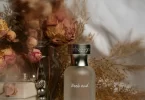The allure of royal front hand mehndi design lies not only in its visual beauty but in the cultural narrative it carries. Worn with pride, elegance, and purpose, this intricate art has transcended borders, evolved across generations, and continues to inspire millions today. The royal front hand mehndi design is more than ornamentation—it’s a celebration of identity, heritage, and self-expression.
Contents
Understanding Mehndi and Its Cultural Significance
Before appreciating the beauty of a royal front hand mehndi design, it is essential to understand its deeper cultural roots and the powerful emotions it evokes across the world.
The Origins of Mehndi
The history of mehndi dates back thousands of years, with its earliest use documented in ancient civilizations like Egypt and India. The application of mehndi was often linked to rituals, celebrations, and rites of passage. While many designs have evolved, the royal front hand mehndi design continues to reflect the grace and symbolism of ancient artistry. Its lineage can be traced to the Mughal era, where queens and noblewomen adorned their hands with elaborate patterns, signifying status and beauty.
Symbolism and Meanings in Mehndi Designs
Each royal front hand mehndi design carries symbolic meaning. The placement of motifs like paisleys, mandalas, and floral vines represents love, fertility, and prosperity. For many brides, the application of mehndi symbolizes the start of a new journey and is believed to bring good fortune. A royal front hand mehndi design often includes motifs like peacocks, palatial domes, and intricate lines that signify regal elegance and timeless beauty.
Mehndi in Various Cultures Around the World
Though rooted in South Asian traditions, mehndi has found a place in many cultures. From Middle Eastern geometric patterns to North African tribal designs, the practice has global significance. The royal front hand mehndi design adapts beautifully into these traditions, incorporating regional flair while maintaining its noble essence. In Western cultures, henna is used at festivals, weddings, and bohemian-style gatherings, often influenced by the sophisticated charm of royal front hand mehndi design.
The Artistry of Royal Front Hand Mehndi Designs
To truly appreciate the intricacy of royal front hand mehndi design, one must delve into the artistic process and the stylistic elements that define its uniqueness.
Characteristics of Royal Mehndi Designs
Elegance and complexity define a royal front hand mehndi design. These patterns are often symmetrical, highly detailed, and strategically arranged to create an aura of opulence. What separates royal designs from regular ones is the presence of structured layouts, ornate detailing, and often, portrait-style elements that narrate a visual story.
The royal front hand mehndi design typically begins from the fingers and stretches to the wrist or even forearm, often leaving no empty space. These designs represent perfection, balance, and grace, making them an ideal choice for important occasions.
Popular Motifs and Patterns
Common patterns found in a royal front hand mehndi design include lotus flowers, peacocks, domes, chandeliers, and jali work. These motifs mimic elements found in palaces and royal courts. Each symbol has its story—lotuses represent purity, peacocks symbolize beauty, and chandeliers denote light and festivity.
The use of bold outlines combined with intricate inner detailing gives the royal front hand mehndi design its characteristic texture and depth. Some modern interpretations even include bride-and-groom figures and miniature palace structures.
The Role of Color in Mehndi Application
While mehndi traditionally appears in deep reddish-brown tones after drying, modern royal front hand mehndi design styles often incorporate different natural elements to enhance color. Adding sugar-lemon solutions or clove steam helps in darkening the hue.
The richness of the color in a royal front hand mehndi design often becomes a point of pride, especially in weddings, where a deeper stain is believed to indicate deeper love. It’s not just design but color intensity that enhances the royal aesthetic.
Techniques for Applying Royal Front Hand Mehndi
Achieving a flawless royal front hand mehndi design requires the right tools, preparation, and techniques. This section explores how artistry meets technique in the mehndi world.
Tools and Materials Needed
To create a stunning royal front hand mehndi design, artists typically use a finely cut henna cone, filled with natural paste. Other tools include tissue paper, toothpicks for corrections, essential oils like eucalyptus, and cotton swabs.
Organic mehndi powder ensures a deep, rich color. The texture of the paste must be smooth and consistent to allow uninterrupted flow. These essentials contribute to the precision needed in royal patterns.
Step-by-Step Application Process
A beautiful royal front hand mehndi design begins with planning the layout. Artists first sketch mentally or lightly trace key structures before drawing the main outlines. Then they fill in with complex patterns like jaali work, spirals, and curves.
The process demands a steady hand, immense patience, and artistic vision. Once the design is complete, the paste must dry thoroughly—usually between 4 to 6 hours—for maximum color payoff. This ensures the final royal front hand mehndi design appears vibrant and regal.
Tips for Achieving Intricate Designs
To master a royal front hand mehndi design, start with simpler patterns before progressing to more elaborate ones. Practice consistency in cone pressure and learn how to vary line thickness for emphasis.
Using references or tracing pre-designed templates can help beginners. Regular practice improves speed and symmetry—two crucial aspects for a professional finish in royal front hand mehndi design.
Choosing the Right Design for Your Occasion
While all mehndi is beautiful, the royal front hand mehndi design stands out during specific moments of life that call for grandeur. Picking the right design depends on the nature of the event and the wearer’s style.
Mehndi for Weddings and Celebrations
Weddings are the ultimate canvas for royal front hand mehndi design. Brides often go for full-hand patterns that extend to the arms and sometimes feet. These designs become part of bridal identity and tradition.
Anniversaries, engagements, and festivals like Diwali or Eid also see the popularity of royal front hand mehndi design soar. For such occasions, symmetry and intricacy add an extra layer of sophistication.
Everyday Mehndi Styles
Not every royal front hand mehndi design has to be full-length or ultra-complex. Minimalist royal styles exist with fewer motifs but elegant layout. These are perfect for casual gatherings or simply for self-adornment.
Daily wear royal patterns usually focus on the palm with detailed centerpieces surrounded by simple curls or leafy borders. This maintains the regal look while being practical for regular use.
Personalizing Your Mehndi Design
Adding initials, meaningful symbols, or even mini illustrations like musical instruments or hobbies allows you to personalize your royal front hand mehndi design. This customization transforms mehndi into a storytelling medium.
You can also request artists to merge modern elements like geometric symmetry with traditional royal themes. This fusion style keeps the royal front hand mehndi design fresh and reflective of your personality.
Caring for Your Mehndi to Enhance Longevity
The longevity of a royal front hand mehndi design depends heavily on how well it’s cared for before and after application. Following these steps helps preserve its color and details.
Pre-Application Tips for Optimal Results
Clean, oil-free skin helps the mehndi paste adhere better. Exfoliating your hands before applying a royal front hand mehndi design removes dead skin and enhances stain absorption.
Avoid applying lotions or oils before mehndi. Letting the skin breathe makes the design sharper and prevents smudging during application.
Post-Application Care Instructions
Once the royal front hand mehndi design is applied, avoid water for at least 6 hours. Use a lemon-sugar mix on the dried paste to keep it moist and allow the dye to seep deeper into the skin.
Keep the paste on overnight if possible and scrape it off gently without using water. This ensures the royal front hand mehndi design retains a dark, vibrant tone that can last up to two weeks with proper care.
When to Remove Mehndi and How to Do It Safely
Resist the urge to wash off your mehndi with soap or water immediately. Scraping off with a blunt tool or rubbing with coconut oil helps maintain skin moisture and prevents design fading.
Even after removal, avoid water contact for a few hours to allow the royal front hand mehndi design to continue darkening. This patience will reward you with a stunning, long-lasting look.
Conclusion
A royal front hand mehndi design is more than just body art—it’s a ceremonial experience steeped in culture, artistry, and personal expression. Whether you’re a bride stepping into a new phase of life, a festival enthusiast celebrating tradition, or simply someone who appreciates fine aesthetics, the royal front hand mehndi design brings beauty and meaning to your hands.
Every swirl and curve, every motif and stroke, is a tribute to centuries of tradition that continues to evolve. Let your hands tell a story of elegance and legacy with a design that stands as a living masterpiece—the ever-enchanting royal front hand mehndi design.
How useful was this post?
Click on a star to rate it!
Average rating 0 / 5. Vote count: 0
No votes so far! Be the first to rate this post.













